Analogue technology can be frustrating – is that part of the appeal?
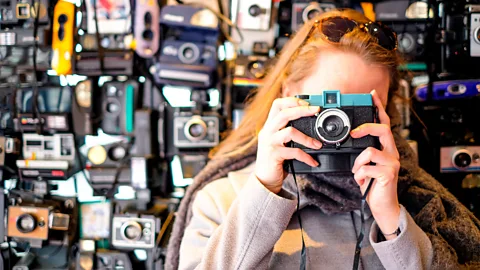 Getty Images
Getty ImagesDigital technology's quickness and convenience ought to have buried its analogue counterparts. Yet vinyl records and film photography endure. Why do people continue to use it?
I finally locate the legendary Schneiders Buero, a shop selling analogue synthesizers in Berlin's Kotti neighbourhood. Up two flights of stairs, the music machinery on offer includes brands such as Moog and Buchla, as well as modern euro-racks. Each set-up contains headphones and boxes of patch cables. There are no instructions and the machines, while alluring, are also somewhat imposing. (From Michael's fieldnotes)
As academics who rarely go a day without playing or making music, we have spent the past decade examining the extraordinary revival of analogue technology. From vinyl records to film cameras, all manner of apparently written-off technologies have been making a comeback, including modular synthesizers – one of the earliest types of this now-ubiquitous electronic instrument.
In the UK, some six million vinyl LPs were bought in 2023, an 11.7% rise on the previous year's sales and the 16th straight year of increase. The vinyl revival is also fuelling a resurgence of independent record shops, with UK high streets now having a third more (around 461 stores) than a decade ago.
Certainly, the stereotype of vinyl listeners being older men no longer holds water. Taylor Swift now accounts for one in every 15 vinyl albums sold in the US – and was a reason for some of the Record Store Day queues in the UK in 2023. Contemporary musicians such as Lana Del Ray, Tyler, The Creator, Olivia Rodrigo and Kendrick Lamar also out-vinyl the likes of Metallica, who themselves sell so much of their music on vinyl that they bought their own vinyl pressing plant to ensure supply.
Such has been the revival in analogue synthesizers that venerable brands including Korg and Moog have relaunched lower-priced modules aimed at novices, while also reviving older classics for the pros. This means there are now more analogue options available than at any time since the 1970s, the heyday of the modular format.
Synthesizer-based music events by new brands such as Teenage Engineering are packed with young and middle-aged enthusiasts eager to play with Kraftwerk-inspired pocket calculator synths that can produce a surprising array of sounds.
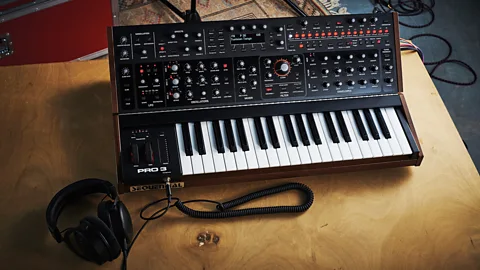 Getty Images
Getty ImagesMy [Michael's Berlin] visit was one of many experiences that sought to explain why so many consumers choose these so-called "difficult" technologies, when far simpler and more convenient options exist. Is the difficulty of learning to use these old devices actually the point?
I tentatively connect two modules. Nothing. I suddenly realise I've been at this for two hours. Feeling somewhat dazed, I look around the shop. Many of those who began using the machines at the same time as me are still locked in thought, their machines covered in patch cords. I keep going, and eventually sounds start to emerge. (From Michael's fieldnotes)
The appeal of the slow
When Phil Oakey, frontman of 80s synth-pop pioneers The Human League, mentioned in a 2011 interview that a new "analogue moment" was happening, we wondered whether this increased interest in obsolete formats would be a passing fad, or something more enduring.
Regardless, we dived in anyway. Michael bought a USSR-produced Lomo LC-A camera (introduced in 1984 and still manufactured today in China), a vinyl record player with plastic needles that destroyed a few records, and some small synth modules by Korg that are targeted at interested amateurs rather than professional musicians.
Eventually, these forays became our formal research project, which has included visiting record fairs and conventions around the world, going on photowalks and attending listening evenings, and meeting an array of diehard analogue communities both on and off line.
In 2018, Giana co-wrote an article for the Harvard Business Review titled The Growing Business of Helping Customers Slow Down, highlighting the growing appetite for "consumer deceleration" – and associated concepts such as "slow shopping" and the provision of "quiet rooms" in some high-street stores.
We see the facilitation of deceleration as beneficial for individual wellbeing, the environment, and businesses alike. And we expect interest in such experiences to rise exponentially in coming years. Recognising our existential need to occasionally slow down can be the basis for winning consumer strategies. (Giana)
Giana's article predicted a future that more of us are now acknowledging. In December 2023, the Observer newspaper called vinyl albums – together with a slowly brewed, "drip" filter coffee – the "antidote to a frenetic digital world". This point was echoed by many of the people we have interviewed about "the appeal of the slow", including Naomi*, who had recently begun experimenting with a 19th-Century-style camera.
"I like the pace of it, it really slows you down. Your options to take pictures are really limited – you've only got two-to-six shots, and the film and processing are expensive. It's also very labour-intensive getting that shot from inside the camera to print, so you're really conscious of getting it right. If you make a mistake at the beginning, you can invest a few days and it's still going to be a rubbish shot. You're not going to fire off 1,000 pictures like digital, and that really appeals to me."
Saved from demolition
According to a 2018 global photography survey, by film producer Ilford Photo, just under a quarter of people shooting on film – including many under the age of 40 – had never used this medium before. Rather than nostalgia, they are turning to film because of its aesthetic values and a greater sense of creative control over their photos. Globally, while the film camera market is still very niche, it's growing fast.
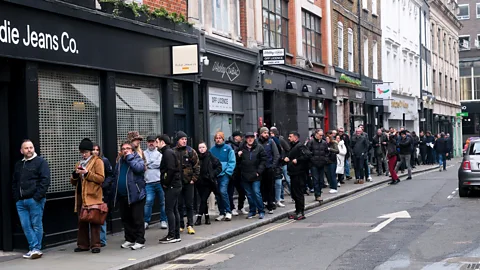 Getty Images
Getty ImagesIn response, brands including Kodak, Polaroid and Leica have re-emerged – in some cases, almost from the dead. Legendary instant camera maker Polaroid was rescued by the Austrian entrepreneur Florian Kaps, whose Impossible Project organisation purchased the company's last factory in the Netherlands days before it was due to close. Kaps explained to us:
"We had just built and discovered an exponentially growing customer group of new-generation instant photographers, so we had to fight for this very last chance to keep this medium alive! We literally saved it from demolition at the very last second in 2008."
From its base in downtown Vienna, the Impossible Project now offers consumers and commercial clients everything from large-scale Polaroid portraits to local handcrafted wines, and even lessons in sourdough breadmaking and block-based printmaking. Elsewhere, interest in analogue has been sustained across a range of categories, from the growth of board games to letter writing and the resilience of physical books.
Members of the US Academy of Motion Picture Arts and Scientists are also analogue fans, judging by the best cinematography nominees in the 2024 Oscars. While movies shot on film remain a small proportion of film releases overall, four out of the five cinematography nominees were shot on Kodak movie film stock (Oppenheimer, Killers of the Flower Moon, Poor Things, and Maestro).
Although digital filmmaking has some clear advantages over analogue, especially when it comes to post-production and distribution, the most common mistake is to suggest it's more cost-effective. In 2018, Kodak's then-global marketing director, Steven Overman, discussed this with us in relation to Oppenheimer's director, Christopher Nolan, who is a well-known champion of shooting on film.
"One of the big myths of film is that it's more expensive than digital – but that's not really true if you're a disciplined filmmaker. When a filmmaker's shooting ratios are off the charts, a lot of post-production needs to be done. But a film like Dunkirk actually did not shoot that high a volume of film, because Chris Nolan is such a disciplined filmmaker – he knows exactly what he wants to capture in the shot. Shooting film by definition requires more discipline."
Overman also noted that in sectors such as fashion, commercial photographers using film are earning more than those who use digital, largely because they are able to stand out in a market saturated with technically great work. He said luxury brands such as Gucci are particularly keen on using film photography as this gives their promotional material a different look.
Work, effort, meaning
Many of the photowalks Michael has been on end in a pub with arguments over the relative merits of digital and film. After one such walk, James, a former teacher of photography, commented on a film photograph of a fox visiting a backyard late at night to feed on nuts. When it was conceded that digital probably was better for wildlife photography, James cut in:
"That's to miss the point! Quality-wise, there's no doubt – but you'd miss all the preparation. It's like going to watch a band versus listening to a CD at home. The sound might be better but you miss seeing the work that went into the performance, the effort of the players and their crew."
Work, effort, meaning – these ideas are all interconnected for users and consumers of analogue technology. Whereas work is often seen as a means to an end, from earning a living to exercising, "analoguers" get a buzz out of the processes of setting things up, getting things right, trial and error, and building up skills.
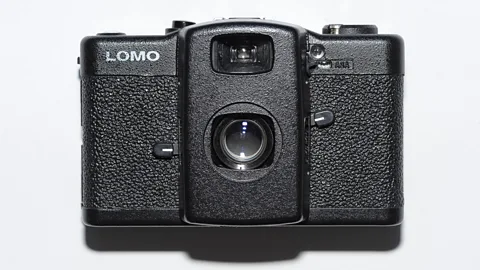 Alamy
AlamyThis "love of the process" was backed up by another photographer, Dan, during a Zoom discussion held amid one of the Covid lockdowns:
"When I'm serious, I don't want to get distracted by what [image] I'm going to end up with. Even with instant photography, I know I'm going to see the shot soon – just not now. I love everything up until pressing the shutter. I love searching for the frame, I like the output, but the whole process is important."
Yet none of the people we've interviewed are analogue purists. These vinyl lovers mostly also have Spotify lists; film photographers will sometimes take out their phone to capture material quickly; and modular synth fans often have tablets full of apps to replicate sounds on the go.
However, when asked to compare the two, they talk about the greater weight and meaning they give to their analogue experiences. Vinyl listeners often tell us they feel more engaged with the music and have developed a deeper experience with the artist. Paul, for instance, described his relationship with one beloved vinyl record:
"The one [vinyl track] that will always make me cry is Aretha Franklin's A Natural Woman. It's scratched to hell but there's something about the warmth that comes from it, which enables something that's not present – something added. I think it is the quality of the human voice; it does feel more like someone's speaking to me."
For Paul, the particular audio quality of a vinyl recording – and even the damage from having played this record so many times – is all part of his relationship with this song. And part of what makes this possible is the process of analogue recording, in which all the sounds being made, including the unscripted noise of the recording process itself, are captured in the final track.
To facilitate this sound, some musicians have even started setting up their own pressing plants, such as Jack White's Third Man Pressing in Detroit. For there is another side to the analogue revival that is anything but planned.
The joy of happy accidents
Whether making music, film or visual arts, "happy accidents" facilitated by restrictive analogue technology can lead to creative inspirations. The term is widely used in electronic pop music to refer to unexpected or unplanned outcomes that arise from the imperfections in analogue equipment, as John, a Melbourne-based musician and 80s music aficionado, explains:
"Half of what you do trying to make music is like a happy accident that ends up sounding better than what you intended. If the machine doesn't do exactly what you thought it was going to do, or goes a bit out of tune, it is all part of the process. Your mistakes or accidents become part of what you are trying to do, rather than you thinking: ‘Oh, I will erase that and do it again properly.' You get a little bit of randomness in it, and that randomness can add to what you are trying to achieve."
Or as Rusty Egan, former member of early synth-pop band Visage and co-founder of the ground-breaking New Romantic club Blitz in London's Covent Garden, puts it: "Don't give up the possibility of accidents!" Egan, always renowned for his forthright opinions, once made that memorable plea when he took to the stage for a DJ set in 2011. Later that evening, he explained what he meant:
"The DJs that just finished, they're great – but they use Ableton [computer software] to smooth out the transitions between songs. This makes it all perfect – too perfect. There's no possibility of mistakes. When we started, we didn't have that technology, so we made mistakes and some of them were happy accidents, resulting in iconic tracks. Remember the slightly out of tune 'duh duh' on Tainted Love? Dave Ball was just learning to play and loved the sound. He put Marc Almond's great voice over it, and you have perfection."
The revival of film-based photography is partly driven by the same sensibility. The Vienna-based Lomography organisation – established in 1992 by a group of students as an arts movement to promote the taking of spontaneous and experimental photos – espouses such things as the "joy of light leaks" typical of cheap Chinese and Soviet-made plastic cameras, generating all sorts of interesting creative outcomes.
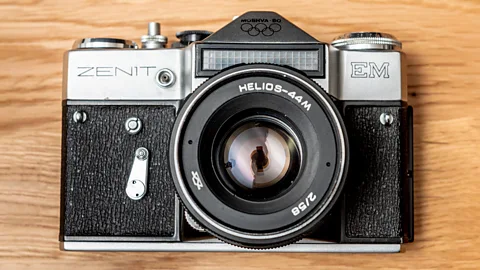 Alamy
AlamyIndeed, rule number nine of Lomography's 10 golden rules highlights the accidental nature of shooting on film rather than a digital camera – and even the lovely surprise of getting your developed film delivered back from the processing laboratory:
So you get a roll of film back from the lab. Who is that person? What's that swirl of light flickering across the image? How did the colours turn out like that? Or what about that accidental double exposure – how the hell did that happen? What was I even trying to shoot there? It's these happy accidents that we love. (Michael)
The grainy nature of film, the crackling sound of vinyl, and the propensity for analogue synths to go out of tune or suffer from power surges can all be key elements in the cultural resonance of art and music. So too human imperfections, which seem to be more common among analogue recordings.
For example, the opening bass part of Cannonball, the 1993 song by US Indie band The Breeders, accidentally starts in a different key. Bass player Josephine Wiggs began playing the riff one step down, then fixed it when the drums came in. And in Roxanne, the Police's 1978 single, the song begins with an accidental piano chord followed by lead singer Sting's laughter, prompted by him having accidentally sat on the piano keys.
Similarly, many of Mick Rock's legendary music photographs, such as the cover of Lou Reed's album Transformer, are technically very grainy because he was shooting in low light and "pushing" the film to its limits, but as a result, they have a painterly feel that has enhanced their appeal and power.
Digital technology is de-skilling us
Over the decade or so of our research, explanations for the analogue revival have shifted from nostalgia to the desire for something physical in a digital age, to the sense that analogue technology is creatively preferable. The idea that working within limits, and needing to overcome them, is beneficial to art creation is now accepted by many within the creative sectors.
Is digital technology de-skilling consumers, leading to a sense of alienation? And is this overcome by using more difficult analogue devices? This is the conclusion we have come to. Certain types of "serious leisure", including sports and creative activities, provide us with intrinsic joy even if they are frustrating to engage in until skills are developed. Using analogue technology is another way consumers can feed this desire to re-skill.
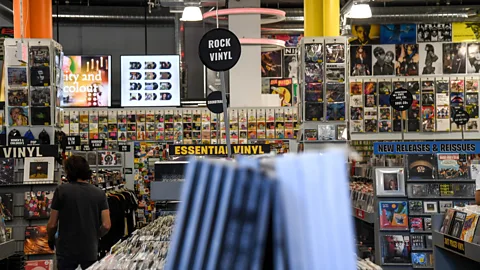 Getty Images
Getty ImagesIn a sense, while analogue users feel they have greater control over their creativity, this occurs through surrendering to the demands of one's device – along the lines of German electronic legends Kraftwerk's menschmaschine (Man-Machine) philosophy. This runs contrary to the promise of most consumer-driven innovation: functional superiority and increased ease of use.
In Malcolm Gladwell's best-selling debut book The Tipping Point, consumers who embrace new technology are seen as the innovators while the slowest to adopt are the laggards, often because of a lack of means to afford the latest innovation. But the analogue, "anti-tech" revival can also be seen as a new form of status consumption, given the costs associated with use, repair, chance of failure, time to learn, and the physical space necessary for storage.
The analogue revival is driven by people wanting to be active rather than passive consumers. The more they engage in the work required by analogue technologies, the more control they gain in shaping their desired experiences – first by learning the rules, then in their skilled application, and then, ultimately, in breaking the rules, generating happy accidents to be shared with like-minded others.
Rob is the founder of a website originally devoted to The Human League, which eventually became a platform for electronic music and, for a brief time, a record label. Having been dormant for a long period, suddenly the website began celebrating vinyl in a big way. Rob told us how his love of music had turned sour with the "sheer ease" of digital, starting with CDs and the MP3 player – and how vinyl had reinvigorated him.
"I would never listen to the album all the way through on an MP3, so it all became a bit disjointed. It was too easy – I was getting bored. I wasn't getting pulled into music as much as what I remembered … With vinyl, it's made me look at bands I never would have considered on CD at all."
For Rob, the problem came when listening on digital devices which didn't have the "sides" of vinyl albums, and then listening on music streaming platforms which have digital algorithms to preference popular tracks. Much of the joy of listening to music lay in discovering unsung album track gems and single B-sides.
'This song sucks'
In our research, we distinguish between analogue "craftspeople", who have spent hours mastering the rules of their technology, and "designers" who go further. These are the people who want to stretch and break the rules and trigger the happy accidents that create something altogether new. For example, photographers who seek more creative expressions by pre-soaking or "souping" their camera film in lemon juice, coffee, beer, or even burning it.
And among this group, connecting digital and analogue technology is also common – combining two completely different systems to generate even more possibilities.
 Niko Tavernise/Warner Bros
Niko Tavernise/Warner BrosFilm director Denis Villeneuve's first instalment of Dune (2021) was initially shot on digital, then transferred to film, before being re-digitised. Why?
Villeneuve says he felt that digital-only would have been "too harsh" for a movie in which texture and nature play an important role. But at the same time, for a story set in the year 10191, relying solely on film would have given too much of a nostalgic feel. By combining the two, Villeneuve got a film that, in his words, has a "more timeless, painterly feel". He pushed this idea even further for Dune: Part Two (2024), with many of the scenes being shot using vintage Soviet-era Helios-44 lenses to create the dreamlike "bokeh" effect.
In I Dream of Wires, a 2014 documentary about the return of analogue synthesizers, Chris Carter, a former member of the industrial music pioneers Throbbing Gristle, explains the attraction of mashing up analogue and digital technology:
"I'm happy to combine analogue and digital [synth] modules. You can have modules that sample and manipulate those sounds, filters that do crazy things, and combining all those things together you get sounds you couldn't imagine before. You can use all these mixtures of manufacturers and designs and the slightest thing that you do on one can have the greatest effect on something else further along in that chain."
In 2022, legendary producer T Bone Burnett and Bob Dylan revealed they had been recording songs using a new kind of analogue, aluminium disc that, according to their announcement, "possesses a depth, resonance and sonic fidelity that exceeds that of vinyl, CD, streaming or any other means of experiencing recorded music". While this project was very much geared towards rich collectors, with the re-recording of Dylan's hit single Blowin' in the Wind subsequently selling for $1.85m (£1.48m) at auction, it suggests analogue music technology may yet have more innovations in store for us.
There is, however, another reason for the growing popularity of this old and difficult technology. Recently, there has been much hand-wringing about the role of humans in the creation and consumption of art forms, especially with the widespread availability of AI-generated art and music.
Nick Cave, when sent the lyrics of a song generated by Open AI's chatbot ChatGPT "in the style of Nick Cave", wrote back in January 2023: "This song sucks." And he said a lot more besides, including that songs arise out of suffering and "data can't suffer":
"ChatGPT has no inner being, it has been nowhere, it has endured nothing, it has not had the audacity to reach beyond its limitations, and hence it doesn't have the capacity for a shared transcendent experience, as it has no limitations from which to transcend."
Cave, like many of our interviewees, highlights the importance of having limits to overcome as part of any human creative process. Because analogue privileges real people in the making of art, it may become ever more culturally important as an antidote to the burgeoning use of AI. Or as Cave puts it:
"This is what we humble humans can offer that AI can only mimic – the transcendent journey of the artist who forever grapples with his or her own shortcomings."
--
*Some names in this article have been changed to protect the anonymity of the interviewees.
*Michael Beverland is professor of brand management at the University of Susses Business School
*Giana M Eckhardt is professor of marketing at King's College London
This article originally appearedon The Conversation, and is republished under a Creative Commons licence.
--
For timely, trusted tech news from global correspondents to your inbox, sign up to the Tech Decoded newsletter, while The Essential List delivers a handpicked selection of features and insights twice a week.
